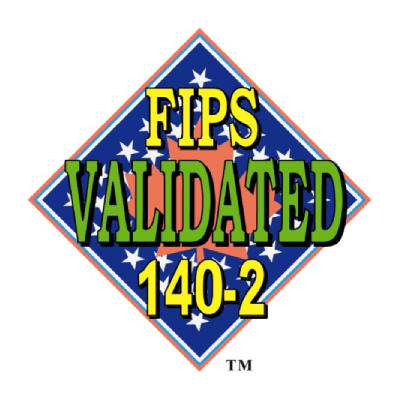Posted by
December 22, 2023
In an era where digital transformation propels businesses into the cloud, many organizations find themselves distributed across multiple platforms. While the multi-cloud approach offers unparalleled flexibility, it also introduces complex challenges, especially in secrets management. Secrets, the digital equivalents of high-security keys, ensure the safe operation and communication of our interconnected systems. However, in the diverse landscape of AWS, Azure, GCP, and other platforms, these secrets are scattered, risking security breaches and inefficiencies.
Enter Akeyless Universal Secrets Connector (USC)*: a pivotal tool in multi-cloud environments, centralizing secrets management and streamlining operations across platform tools. Explore the growing importance of secrets management, the challenges of multi-cloud settings, and see how Akeyless USC addresses these complexities with integration and security.
Why Secrets Management is Crucial in Today’s Multi-Cloud Environment
The Role of Secrets Management
In the multi-cloud world we live in, managing secrets effectively is critical. It’s not just about hiding passwords. Secrets management ensures that as organizations scale the number of machine identities across their infrastructure, each one is properly authenticated and validated. Besides passwords, it’s crucial to protect other key assets like API keys, encryption keys, and certificates. Mishandling them can lead to unauthorized data access, which compromises both the data’s security and privacy. In essence, good secrets management keeps our data safe and ensures only the right people or systems can access sensitive data.
The Multi-Cloud Challenge
In the evolving digital age, many organizations leverage multiple cloud platforms like AWS, Azure, and Google Cloud, capitalizing on their distinct strengths. This multi-cloud strategy, while offering flexibility, introduces notable challenges:
- Siloed Secrets Management: Secrets, ranging from API keys to database credentials, risk fragmentation, particularly in siloed tools in different cloud platforms. As organizations juggle secrets on average across three platforms, updating or rotating these secrets becomes a complex task.
- Governance and Auditing: Ensuring compliance in a multi-cloud environment is daunting, with different logging mechanisms across platforms. This results in businesses spending 40% more time on compliance tasks than those with unified secrets management.
- Increased Attack Surface: Employing multiple platforms amplifies risk. As each platform presents unique vulnerabilities, security concerns can escalate with different entry points for attackers.
Unpacking Akeyless USC: Centralized Secrets Management for the Multi-Cloud World
What is Akeyless Universal Secrets Connector (USC)?
Think of Akeyless USC as a bridge that connects different islands of secrets management tools. Without USC, your visibility of secrets would be fragmented across different secret managers in different cloud platforms. By using USC, you can see and manage these secrets with ease. USC manages these secrets without making extra copies, ensuring you can manage siloed secrets without redundancy or replacing existing secret managers.
How does it make things easier?
Akeyless USC is all about simplicity and integration. With it, you can automatically sync and update secrets from different secrets management tools across platforms. Imagine having a single dashboard where you can see and manage all your secrets, no matter where they currently exist. This not only gives you a full view of everything but also makes management and logging across various platforms much easier.
Practical Examples of Using Akeyless USC
Unified Management Across Clouds & Platforms
Many enterprises grapple with secrets scattered across secrets management tools like AWS Secret Manager, Kubernetes Secret Manager, Azure Key Vault, and GCP Secret Manager. Akeyless USC streamlines this by serving as a single hub for managing secrets from any supported vault. No more toggling between multiple tools or dealing with siloed management. With Akeyless USC, your secrets management is centralized, enhancing efficiency and visibility.
Comprehensive Visibility & Simplified Compliance
Having secrets siloed in different tools often poses challenges in maintaining visibility and ensuring organizational compliance. Akeyless USC addresses this by centralizing the viewing, tracking, and logging of all your secrets. The platform’s capability to easily track and export all USC activities is a game-changer for audit readiness. Attain peace of mind with Akeyless USC, knowing every secret is secure, easily traceable, and compliant.
Streamlined Authentication Across Vaults
The true power of Akeyless USC isn’t just centralization; it’s about enhancing your existing siloed vault capabilities. Akeyless becomes the sole point of authentication, ensuring users can effortlessly access secrets across any connected infrastructure. No more juggling multiple authentications. Plus, the user-friendly CLI and SDKs provided by Akeyless make managing secrets less tedious and more seamless, making your secrets management workflow much easier.
Step-by-step Guide: How to Get Started with Akeyless USC
Setting Up Akeyless USC: Creating an External Secrets Manager
- Select the Platform: Log in to the Akeyless console. Select New > External Secrets Manager, then choose the secrets manager you want to connect to, such as AWS Secrets Manager.
- Name the Secrets Manager: Fill out configuration details for the USC, such as the name, Target, and Gateway. (Please see our documentation to learn more about Targets and the Akeyless Gateway).
- View the Secrets Manager: Once connected, Akeyless automatically syncs your secrets. You should see your secrets begin to populate within the Akeyless console. To view your secrets, head over to the USC just created and click ‘View All Secrets’.
Functionality: Managing Secrets with Akeyless USC
- Create, View, Update, and Delete Secrets: Using Akeyless, you can easily manage secrets on platforms such as AWS, GCP, Azure, and Kubernetes. You can use either the console or CLI to create, view, update, and delete secrets across any USC.
- Sync Secrets: Akeyless automatically syncs and updates any secrets from within the Akeyless dashboard.
- Automate Secret Management: Development is simplified with the Akeyless CLI and SDKs.
- Monitor and Track: Akeyless logs all activities surrounding the use of secrets, improving visibility and monitoring for compliance needs.
For a detailed step-by-step guide, visit our official documentation.
In Conclusion: Akeyless USC and the Future of Multi-Cloud Secrets Management
In our multi-cloud age, businesses continuously juggle secrets such as API keys and credentials across siloed solutions on cloud platforms like AWS, Azure, and GCP. These scattered secrets create a potential risk of security breaches and inefficiencies. Enter Akeyless USC: a unified hub that streamlines secrets management across tools and platforms. Instead of fragmented, decentralized secrets, Akeyless offers a single dashboard for centralized control, improving security, compliance, and workflow. USC simplifies integration, ensures compliance, and reduces risks. For companies navigating complex multi-cloud terrains, Akeyless USC is the way forward, making secrets management cohesive, secure, and efficient.
See how Universal Secrets Connector works in Akeyless 👇
Interested in experiencing the future of secrets management firsthand? Book a demo with us today.
*Universal Secrets Connector (USC) was formerly known as the External Secrets Manager (ESM).
















